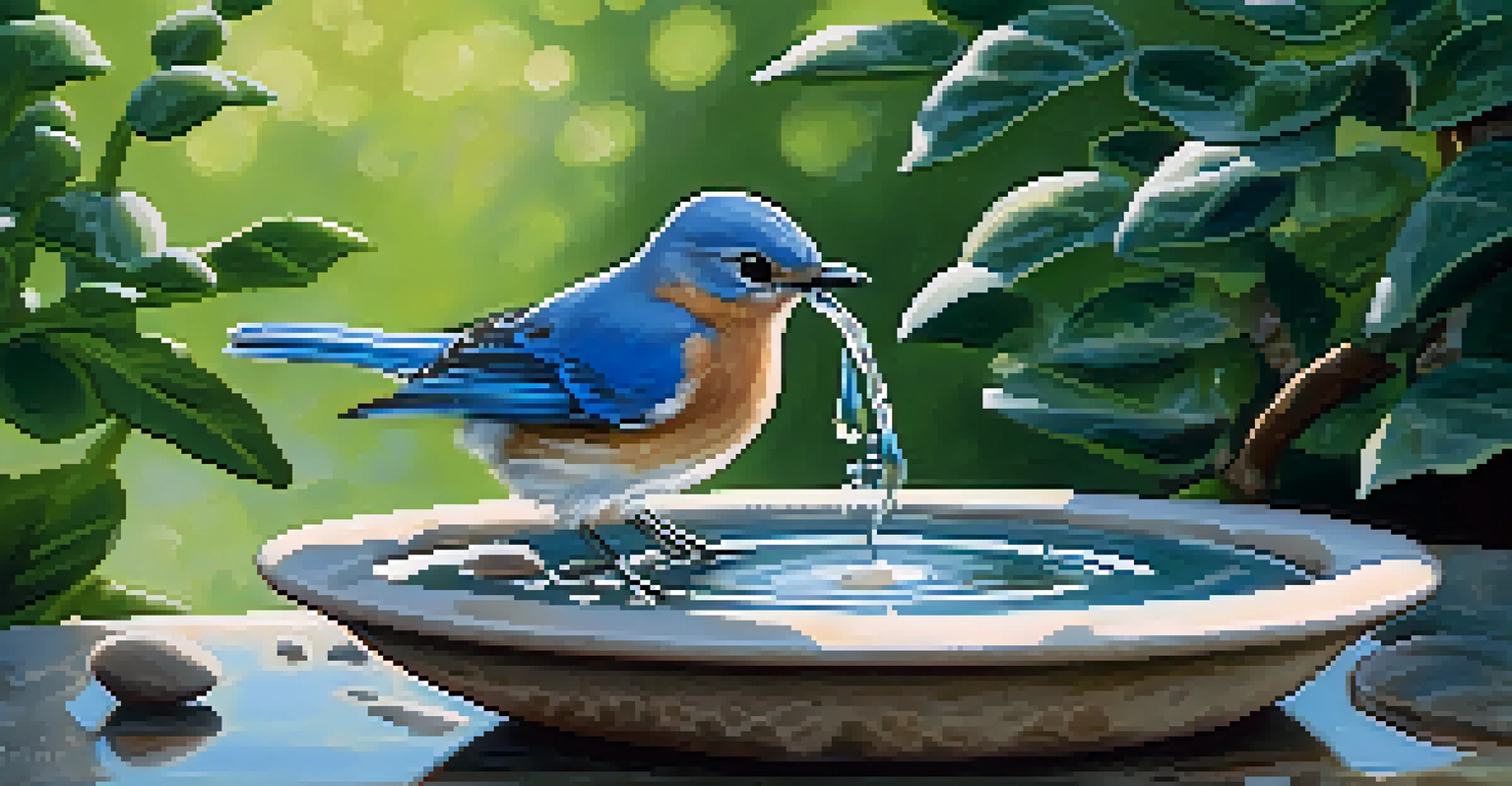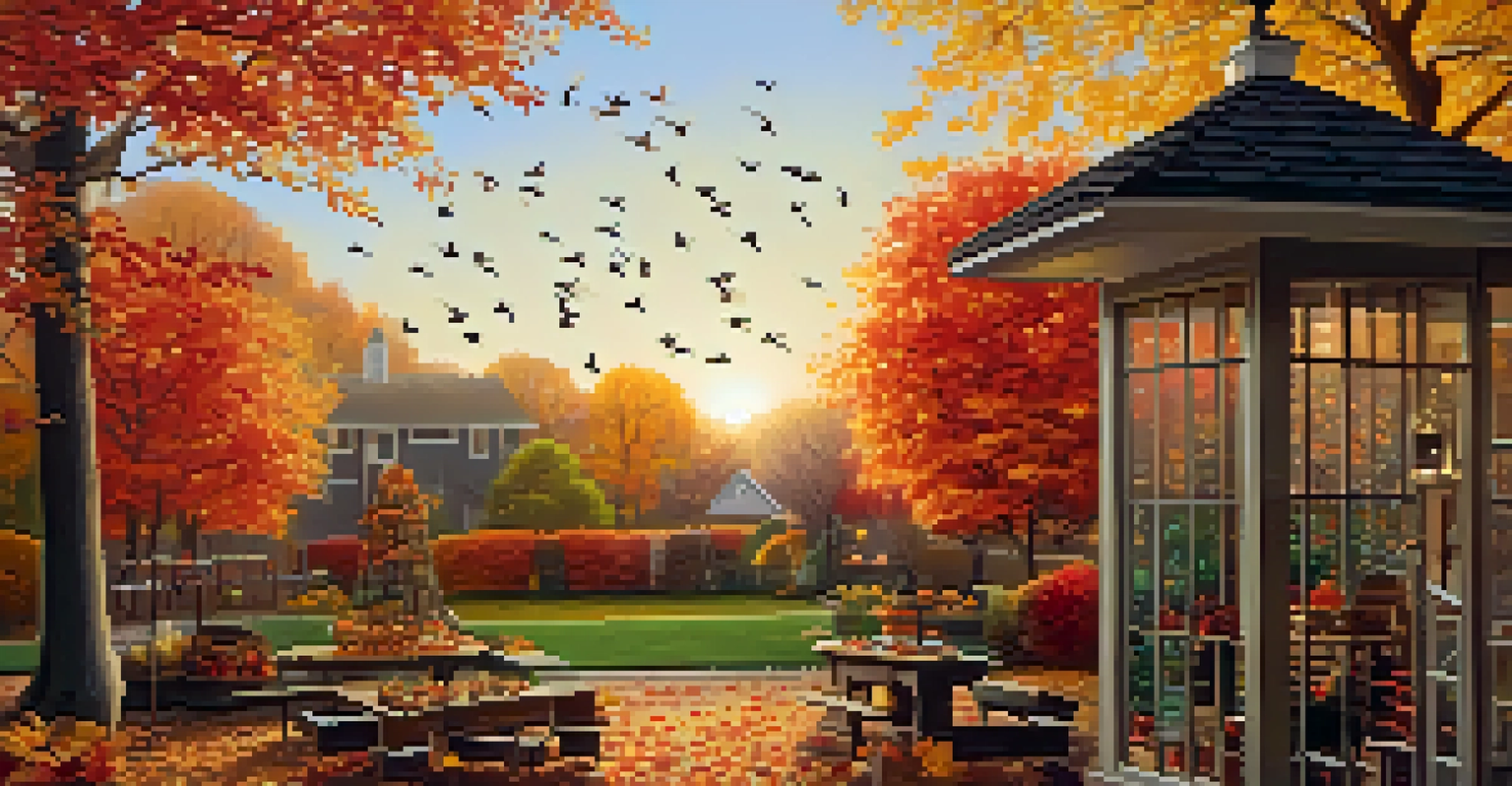Common Mistakes in Bird Feeding and How to Avoid Them

Not Choosing the Right Bird Feed for Your Area
One of the most common mistakes in bird feeding is not selecting the right type of bird feed for the species in your area. Different birds have different dietary needs, and using a generic mix might not attract the birds you're hoping to see. For instance, songbirds may prefer sunflower seeds, while finches are drawn to nyjer seeds. Researching local bird species and their preferences can make your feeding efforts much more effective.
Birds are indicators of the environment. If they are in trouble, we know we'll soon be in trouble.
Additionally, keep in mind that certain birds may have seasonal preferences. For example, during the winter months, energy-rich foods like suet are essential for many birds as they help them maintain body heat. By tailoring your feed to the specific needs of local birds at different times of the year, you can create a more inviting environment for them.
Ultimately, understanding and meeting the dietary needs of your feathered friends will not only enhance your birdwatching experience but also contribute to their health and well-being. So, take the time to learn about your local birds and stock your feeders accordingly.
Feeding Birds at the Wrong Time of Day
Timing can be everything when it comes to bird feeding. Many people tend to fill their feeders at their convenience, but this can mean missing the peak activity times of birds. Early morning and late afternoon are generally the best times to attract birds, as they are most active during these hours. By synchronizing your feeding schedule with these times, you'll have a better chance of observing more bird activity.

Moreover, birds are more likely to visit feeders when they feel safe and secure. If you feed during busy times of the day when there are many distractions or disturbances, birds may avoid your feeders altogether. Consider the surrounding environment and try to create a calm atmosphere for them to enjoy their meals.
Choose the Right Bird Feed
Selecting feed tailored to local bird species enhances your chances of attracting them.
Creating a routine by filling your feeders in the early morning or late afternoon can also help establish a sense of predictability for the birds. They will learn when to expect food and become more comfortable visiting your feeders regularly.
Ignoring Feeder Hygiene and Maintenance
Neglecting the cleanliness of your bird feeders is a mistake that can have serious consequences. Dirty feeders can harbor mold, bacteria, and parasites that can harm birds. Regularly cleaning your feeders, ideally every two weeks, can help prevent the spread of disease among your feathered visitors. A simple mixture of warm water and vinegar is effective for cleaning without introducing harmful chemicals.
The bird is powered by its own life and by its motivation.
In addition to cleaning, inspecting feeders for damage is crucial. Broken parts can deter birds or even injure them. Make it a habit to check your feeders for signs of wear and tear, and replace any damaged components promptly.
By prioritizing feeder hygiene, you're not only ensuring a safe feeding environment but also showing that you care about the health and well-being of the birds visiting your yard.
Using the Wrong Feeder Type for Your Birds
Each bird species has its own preferences when it comes to feeders. Some birds prefer platform feeders, while others may favor tube feeders or suet cages. Using the wrong type can limit which birds visit your yard. For instance, smaller birds like chickadees and finches tend to favor tube feeders, while larger birds like cardinals might prefer platform feeders.
Furthermore, consider the feeding behavior of the birds you want to attract. Some birds, such as woodpeckers, enjoy feeding on suet, while others may prefer seeds that can be easily accessed from a perch. By aligning your feeder types with the habits and preferences of different bird species, you’ll create a more inviting space for them.
Maintain Feeder Hygiene
Regularly cleaning and inspecting feeders ensures a safe environment for visiting birds.
Experimenting with various feeder types can make your yard a hotspot for birdwatching. The more options you provide, the more diverse the bird visitors will be, enriching your bird feeding experience.
Failing to Provide Fresh Water
While food is essential, don’t overlook the importance of providing fresh water for birds. Many people mistakenly believe that birds can get all the moisture they need from their food. However, fresh water is crucial for drinking and bathing, especially during hot summer days or dry winters. A simple bird bath can significantly enhance the appeal of your yard to birds.
Make sure to change the water regularly, as stagnant water can become a breeding ground for mosquitoes and other pests. Clean the bird bath at least once a week to keep it fresh and inviting for your feathered friends. You might be surprised at how quickly birds will flock to your yard once they discover a reliable water source.
Incorporating a water feature not only benefits birds but also adds beauty to your garden. Consider adding pebbles or stones to provide a shallow area where smaller birds can safely drink and bathe.
Ignoring Seasonal Changes in Bird Behavior
Birds are influenced by seasonal changes, and their feeding habits can shift dramatically throughout the year. Many people make the mistake of using the same feed and feeder setup year-round, unaware that different birds may visit during different seasons. For instance, during migration periods, you may see an influx of new species that weren’t present before, so it’s valuable to adjust your offerings accordingly.
Understanding these seasonal patterns can help you optimize your bird feeding strategy. For example, in the fall, offering high-calorie foods can help migratory birds refuel for their long journeys. Similarly, in the spring, you might want to include nest-building materials like twigs and grasses to attract nesting birds.
Adapt to Seasonal Changes
Adjust your feeding strategies to align with seasonal shifts in bird behavior for better results.
By being observant and adapting to the changing seasons, you can create a dynamic feeding environment that caters to a diverse array of birds throughout the year.
Not Being Patient or Observant Enough
Bird feeding requires a bit of patience and observation. Many new bird watchers become discouraged when they don’t see immediate results after setting up their feeders. It’s essential to give birds time to discover your food sources, as they may take a few days or even weeks to feel comfortable visiting a new feeder. Remember, it can take time for birds to learn about new food sources in their environment.
Additionally, being observant can enhance your birdwatching experience. Take the time to sit quietly near your feeders and watch the interactions among different birds. You may notice specific feeding patterns or behaviors that can inform your future feeding strategies.

Patience and observation go hand in hand, allowing you to understand the unique dynamics of your local bird population. The more time you invest in observing, the more rewarding your bird feeding experience will be.